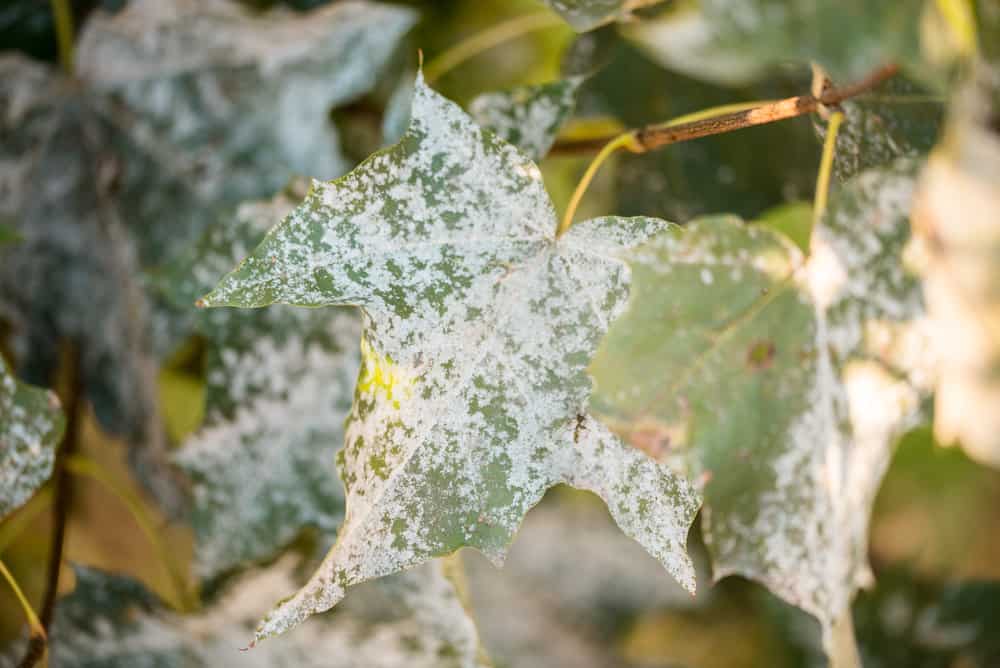
There is a diverse array of trees in the state of Texas standing tall, showcasing the beauty and resilience of nature. Among them, the iconic Texas oak, delicate crepe myrtle, majestic pecan, graceful cedar elm, charming magnolia, and elegant maple grace gardens and avenues with their presence. However, beneath their splendid shade lies a tale of battles fought against pests and destructive tree diseases. Understanding the unique challenges and diseases that affects these trees is crucial for tree care specialists, garden enthusiasts, and homeowners alike.
As caretakers of our green giants, it falls upon us to decipher the signs that hint at lurking ailments in these beloved trees. The art lies not only in identification but also in swift action to prevent the disease from spreading to healthy trees and groves. Armed with knowledge on combating pests and diseases specific to each tree species mentioned above can pave the way for healthier backyards and thriving landscapes across North Texas. Discover new perspectives on nurturing these trees back to robust health through proactive measures and smart solutions tailored to each species' needs. Using a professional tree service like a certified arborist before infection will help manage and prevent dying trees.
Texas Oak Wilt
Texas oak trees, prevalent across North Texas, are vulnerable to several common diseases that can threaten their health. One disease that affects oak trees is Oak Wilt. Oak Wilt is caused by a fungus spread through interconnected root systems or sap-feeding beetles. Early symptoms include leaf discoloration and wilting, progressing to tree death if left unaddressed. Ensuring proper drainage around the root zone and avoiding pruning during peak infection periods in spring and fall can help prevent this destructive disease.
Providing adequate spacing between trees encourages good air circulation, reducing moisture levels that promote fungal growth during humid conditions. Applying fungicides preventatively can also aid in warding off potential infections. Additionally, maintaining tree health through proper watering and mulching practices strengthens their natural defenses against pests like oak twig girdlers that target weakened species of oaks.
Effective pest management strategies tailored to Texas oak trees involve early detection and intervention. Trunk injections of insecticides can combat borers like the goldspotted oak borer known for devastating mature oaks. Implementing sticky bands on trunks helps trap crawling insects before they cause significant harm. By fostering a healthy environment through routine care and prompt action at the first sign of trouble, arborists and homeowners alike can protect these iconic inhabitants of the North Texas landscape.
Crepe Myrtle and Powdery Mildew Tree Disease
When it comes to crepe myrtle trees in North Texas, there are common pests that gardeners and arborists need to be vigilant about. Aphids can often take up residence on the foliage, causing the leaves to curl and distort. These tiny insects might also produce sticky honeydew, leading to sooty mold development. Additionally, scale insects can latch onto crepe myrtle branches, sapping vital nutrients and weakening the tree over time.
Diseases can also pose a threat to the health of crepe myrtles. Powdery mildew is a frequent issue, especially in humid climates like North Texas. This fungal disease manifests as white powdery spots on the leaves and flowers of the tree. Another common problem is Cercospora leaf spot, characterized by dark spots with yellow edges on the foliage.
To maintain healthy crepe myrtle trees despite these challenges, integrated pest management is crucial. This approach involves combining cultural practices, biological controls, and minimal pesticide use for sustainable pest control. Regularly inspecting trees for signs of infestation or disease, promoting proper air circulation around plants, and pruning away affected branches can all help manage issues effectively while reducing reliance on harsh chemicals. Additionally, fostering biodiversity in your garden can attract natural predators of pests, providing a more sustainable solution to pest control for your beloved crepe myrtles.
Common Tree Disease: Pecan Scab
Pecan trees, beloved for their delicious nuts and striking appearances, are prone to various diseases in North Texas as well. One of the most common issues affecting pecans is pecan scab, a fungal disease that can diminish both the tree's health and nut production. Another prevalent threat is downy spot disease, which manifests as yellow or olive-green spots on leaves, potentially leading to defoliation if left unchecked.
To prevent fungal infections and other common problems in pecan trees, it's crucial to prioritize proper tree care practices. This includes ensuring good soil drainage, adequate air circulation around the tree canopy by pruning when necessary, and regular watering to maintain overall tree vigor. Implementing a consistent fertilization schedule tailored to the specific needs of pecan trees can also boost their immune systems and resilience against diseases.
For promoting the overall health of pecan trees, arborists recommend annual inspections to promptly detect any signs of diseases or pests. Timely intervention through targeted treatments like fungicides or insecticides can effectively manage issues before they escalate. Additionally, practicing good orchard hygiene by removing fallen leaves and debris can significantly reduce the risk of pathogens overwintering and reinfecting the trees come springtime. By adopting these proactive measures along with appropriate care routines, pecan trees in North Texas can thrive and continue producing bountiful harvests year after year.
Cedar Elm: Shielding Against Threats to Prevent Tree Disease in Texas
Cedar elm trees in North Texas face a range of adversaries, with specific pests targeting their health and vitality. One prominent nemesis is the Elm Leaf Beetle, whose larvae feed on tender cedar elm leaves, leading to defoliation and stress on the tree. Another common troublemaker is the Cedar Elm Bark Scale, which can weaken the tree by causing loss of sap and creating entry points for diseases. By recognizing the signs of these pests early on, arborists and homeowners can take timely action to safeguard their cedar elms.
Distinguishing symptoms of diseases impacting cedar elms is crucial for effective intervention. Cedar elm wilt disease is caused by a fungus carried by insects like bark beetles, manifests through gradual yellowing and browning of leaves starting at the tree's crown. Additionally, root rot can pose a serious threat if left unchecked, showing signs like stunted growth and discoloration of roots. Vigilance in spotting these indicators can be instrumental in preventing irreversible damage to cedar elm trees.
To fortify cedar elms against risks, implementing preventive measures can make a significant difference. Regularly inspecting trees for early pest infestations or disease symptoms ensures prompt treatment. Proper pruning techniques to improve air circulation and maintaining soil moisture levels conducive to tree health are also vital. Appropriate fertilization targeted at boosting the tree's defenses can enhance its resilience against potential threats. By integrating these protective strategies into care routines, cedar elm owners can nurture stronger and more resistant trees capable of withstanding environmental challenges effectively.
Magnolia Trees: Shielding Against Common Diseases and Pests
Magnolia trees, with their stunning blooms and glossy foliage, are prized additions to North Texas landscapes. However, like all trees in the region, they face threats from diseases and pests that can compromise their health. Typical diseases seen in magnolia trees in North Texas include powdery mildew, leaf spot, and twig blight. These fungal infections can discolor leaves, cause defoliation, and weaken the tree's overall vitality if left unchecked.
To boost the immunity of magnolia trees against pests and diseases, cultural practices play a crucial role. Proper watering techniques to maintain soil moisture without leading to waterlogged conditions can help prevent stress-related issues. Mulching around the base of the tree not only conserves moisture but also shields roots from temperature extremes. Pruning dead or diseased branches promotes airflow through the canopy, reducing humidity levels that foster fungal growth.
When facing common issues with magnolia trees in North Texas, organic remedies can offer effective management solutions. For powdery mildew, a homemade mixture of baking soda and water sprayed on affected areas can act as a natural fungicide. Neem oil is another eco-friendly option for controlling various pests like scale insects that might threaten the health of magnolia trees without posing harm to beneficial insects.
Implementing these preventive measures and natural treatments will aid in safeguarding the beauty and well-being of magnolia trees in North Texas, allowing these majestic specimens to thrive harmoniously within the local landscape.
Anthracnose and Maple Trees in Tx
Maple trees in North Texas are prized for their vibrant foliage and versatility in landscaping, but they are also susceptible to a range of pests and diseases. Common insect pests that target maple trees include aphids, scale insects, and borers. These pests can weaken the tree by feeding on its leaves, bark, or sap, making it crucial to watch for early signs of infestation such as sticky residue on leaves or unusual patterns of damage.
To protect maple trees from fungal infections like powdery mildew or anthracnose, ensure good air circulation around the tree by pruning dense branches. Avoid overhead watering which can create moisture conducive to fungal growth. Applying a fungicide at the first signs of disease can help manage these issues effectively without harming the tree or surrounding environment.
Maintaining the vitality and beauty of maple trees requires regular inspections for pest activity and disease symptoms. Implementing cultural practices like mulching to retain soil moisture and providing adequate nutrients through fertilization can boost the tree's defenses against stressors. Additionally, promptly removing damaged or diseased branches can prevent the spread of pathogens throughout the tree canopy while promoting healthy new growth.
By combining vigilant monitoring with proactive care measures such as proper pruning techniques, strategic watering practices, and timely intervention against pests and diseases specific to North Texas conditions, maple tree owners can sustainably preserve these beloved species in their landscape for generations to come. Remember that seeking guidance from certified arborists or tree care professionals is advisable for severe issues beyond what DIY remedies can address effectively.
Concluding Thoughts on Texas Tree Diseases
In conclusion, maintaining the health of common North Texas trees like the Texas oak, crepe myrtle, pecan, cedar elm, magnolia, and maple is vital for preserving their beauty and longevity in the landscape. Regular monitoring to detect early signs of diseases and pests is key to addressing issues promptly. Remember, proactive care through proper maintenance practices can go a long way in preventing severe infestations or infections.
When faced with significant problems that seem overwhelming or persistent despite DIY efforts, seeking professional consultation from arborists or tree care specialists is highly recommended. These experts possess the knowledge and tools to tackle severe issues effectively and ensure the well-being of your valuable trees. By working together with professionals when needed and staying vigilant in caring for your trees, you can create a healthier environment.



